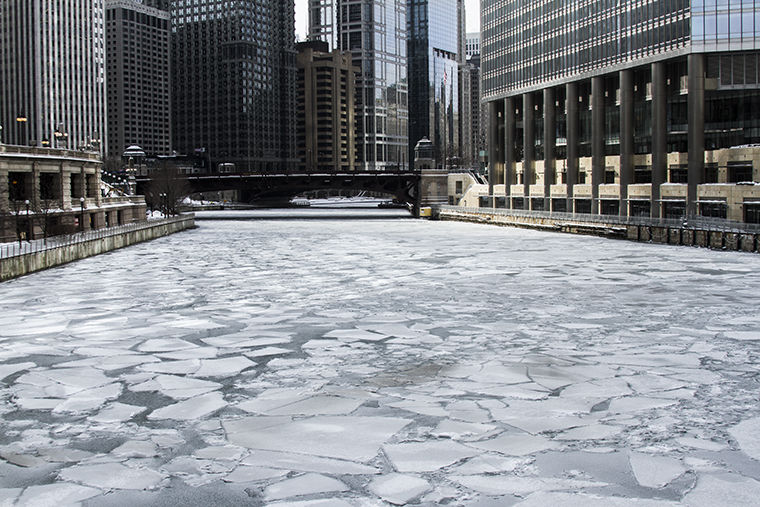Now streaming: real-time quality of the Chicago River
Now streaming: real-time quality of the Chicago River
February 25, 2019
Nature lovers and others enjoying the Chicago River this spring will be able to use their cell phones to tell how clean — or dirty — the water is under a new program designed to access data on what some say is an under-monitored waterway.
The Chicago-based nonprofit Current is planning to combine technology with awareness by launching a pilot program that will install real-time sensors in the Chicago River in Spring 2019 to continuously detect for pollutants. The goal of the program is for Chicagoans to have easy access to the water quality data via an app.
The tentative name for the project is “Eddi,” Frenkel said, which stands for Eco-Data & Dynamicinformatics. He added that this type of sensor has never been used in the U.S.
“Our hope is that by having access to this kind of information, people will feel comfortable interacting with the river and it will provide useful insights to the health of the river system,” Frenkel said.
The funding for the project began in August 2016 when Mayor Rahm Emanuel, The Chicago Community Trust and other civic, government and community leaders launched Our Great Rivers with the goal of making Chicago’s rivers more inviting, productive and lively by 2040.
The Trust accepted Current’s proposal to install sensors and provide an app in June 2018, and funding was awarded in November 2018.
Current’s project is one of 11 The Trust awarded last fall.
Data testing will begin once the sensors are installed with hopes that the project will be streaming by mid-July, Frenkel said.
The Chicago River is sampled once a month by the Metropolitan Water Reclamation District to test for dissolved oxygen levels, bacteria, chemicals and microbial pollution.
As it stands now, it can take 24-48 hours to receive sample results on fecal indicator bacteria and possibly longer for measures on chemical parameters, according to Geeta Rijal, microbiologist at the MWRD.
If Current’s pilot project turned to reality, this could significantly reduce this waiting period for results since water-quality data would be streaming continuously.
The MWRD and Current have meetings to discuss locations for the sensors and monitoring technologies. Additionally, the MWRD has taken Current on a boat tour to view existing monitoring locations.
The project is partnering with the MWRD and Friends of the Chicago River, which is the only nonprofit dedicated solely to the river and will serve as a community outreach sector for the project, said Margaret Frisbie, executive director of Friends of the Chicago River.
Water-quality safety of the Chicago River is determined by the Illinois Environmental Protection Agency and the Illinois Pollution Control Board, said Rijal of the MWRD.
“Based on historical records from 1970 to now, we have good understanding of the water quality in the Chicago River system,” Rijal said.
On the other hand, Frisbie said the current monitoring system is not enough.
“We have a river system that has water-quality issues that need to be understood better, and it’s being under-monitored,” Frisbie said.
There have been similar efforts to use technology to keep residents informed about water quality. For example, the MWRD has a public-notification program for combined sewage overflows, known as CSOs, that people can subscribe to.
As of Feb. 8, 467 people are registered to receive emails, and 193 of them are signed up to receive text messages, said Allison Fore, public and intergovernmental affairs officer at the MWRD.
Chicago beaches are monitored daily by the Chicago Park District from Memorial Day until Labor Day to ensure safe swimming conditions, Frisbie said.
“What we want to see for the Chicago River is that similar level of monitoring,” she said.
Correction 2/27/19:
Margaret Frisbie’s name was misspelled in a previous version of this article. The Chronicle regrets this error.








